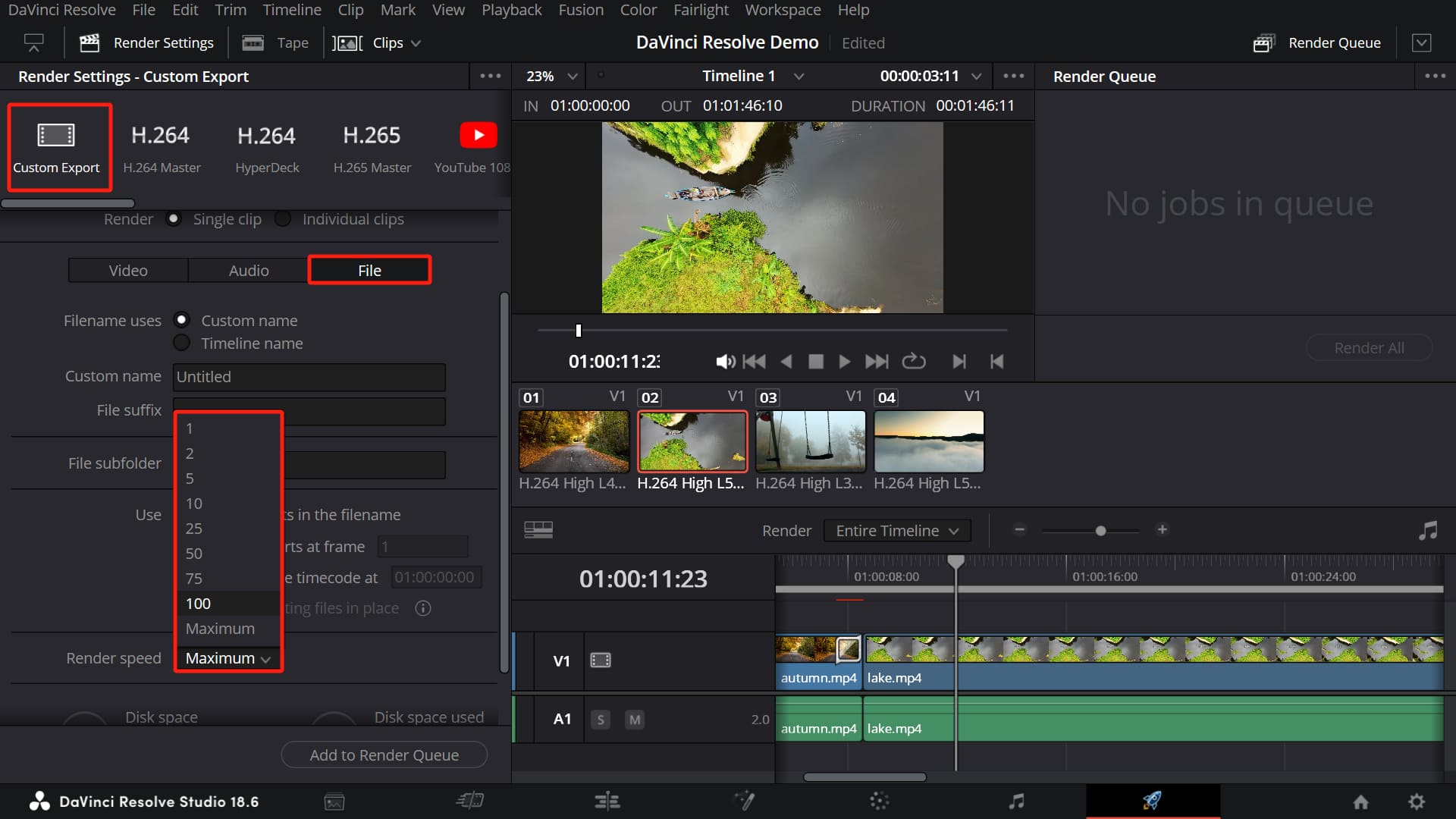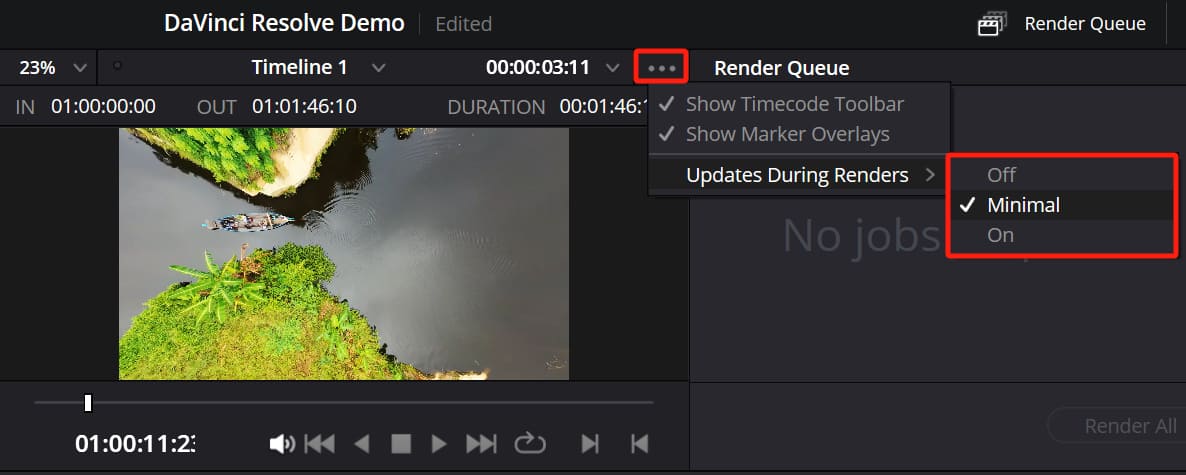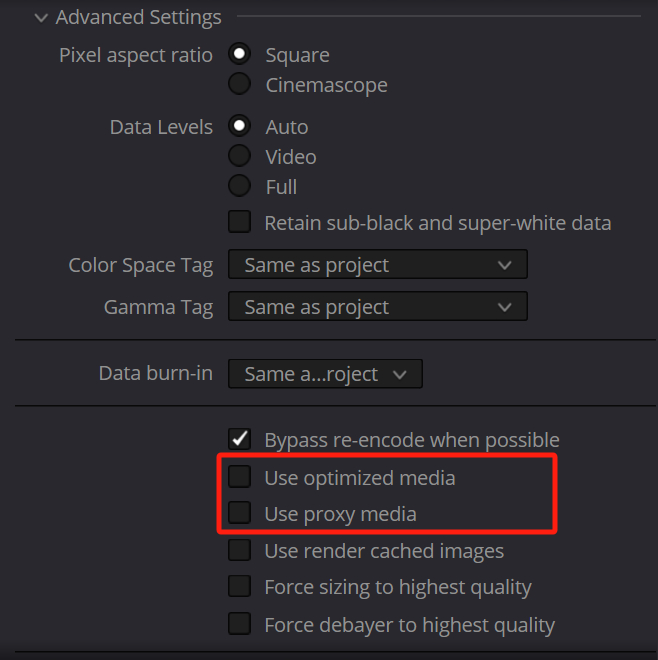How to Stop DaVinci Resolve from Crashing?
Experiencing crashes in DaVinci Resolve is a common issue faced by many digital artists and editors. Whether it freezes during editing or color grading, or crashes while rendering, you'll find that there are various reasons behind these crashes.
In the following guide, we'll share some helpful tips that may assist you in resolving the crashes you encounter in DaVinci Resolve. These tips are especially useful for beginners who are just starting to use DaVinci Resolve.
So, let's get started and tackle those crashes!

In this article, you will learn:
- Reason 1 for DaVinci Resolve Crashes: Incompatible Graphics Card Drivers
- Reason 2 for DaVinci Resolve Crashes: Insufficient GPU VRAM
- Reason 3 for DaVinci Resolve Crashes: Unstable DaVinci Resolve Beta Version
- Reason 4 for DaVinci Resolve Crashes: Insufficient System Memory (RAM)
- The Ultimate Solution for DaVinci Resolve Crashing
- Final Thoughts About DaVinci Resolve Crashing
Reason 1 for DaVinci Resolve Crashes: Incompatible Graphics Card Drivers
Certain issues with Nvidia CUDA or AMD OpenCL drivers can cause DaVinci Resolve to crash due to incompatible graphics card drivers.
The solution is quite simple. Switch to reliable graphics card drivers, as selecting the right drivers is crucial. Remember, it's not always about using the latest drivers; stability is key.
Reason 2 for DaVinci Resolve Crashes: Insufficient GPU VRAM
Blackmagic Design recommends a minimum of 4GB VRAM. They also mention that rendering high-resolution videos (like 1080p, 4K, etc.) and performing advanced processing tasks (such as denoising, dynamic effects, using OpenFX plugins, etc.) heavily rely on the graphics card and its memory.
Extra Tip:
Think of VRAM as a warehouse, where the size of VRAM represents the warehouse's capacity. It's not about having the largest size for better performance; it should be sufficient for your actual needs.
If you're using a dedicated graphics card, replacing the graphics card is the only way to increase VRAM. If you're using a laptop with a dedicated graphics card, you usually have to replace the entire laptop since very few laptops have upgradable GPUs.
If you're using a computer with integrated graphics, you can often increase VRAM allocation in the BIOS settings. However, this will consume available system RAM. Fortunately, for desktop and laptop systems, you can usually install additional system RAM.
Reason 3 for DaVinci Resolve Crashes: Unstable DaVinci Resolve Beta Version
Using an unstable DaVinci Resolve beta version, coupled with inappropriate graphics card drivers, can result in sudden crashes during editing, audio processing, Fusion tasks, or color grading.
The best course of action is to revert back to the previous stable release, such as downgrading from DaVinci Resolve 19 beta to DaVinci Resolve 18.
As the name suggests, beta versions are meant for users to test new features, identify bugs, and check compatibility with new cameras. In essence, they rely on users' assistance to improve the software.
When DaVinci Resolve users report bugs, Blackmagic Design replicates the issues themselves and fixes them in subsequent versions.
Further Reading:
Reason 4 for DaVinci Resolve Crashes: Insufficient System Memory (RAM)
Insufficient memory can easily lead to rendering crashes, especially if your memory is less than 8GB. We recommend having at least 16GB of system memory for smoother performance.
However, try these helpful tips if you're still experiencing issues even after upgrading your system memory.
1. Avoid Setting the Rendering Speed to the Maximum
When you're ready to render your project, switch to the "Deliver" page. In the Render Settings panel on the left side of the page, select "Custom Export" (the default option).
Within Custom Export, you'll find three tabs: "Video," "Audio," and "File." Click on "File" and scroll down until you see "Rendering Speed."
You can set it to 100, 75, or 50. Setting it to "Maximum" can strain your computer. Slow it down a bit, let your computer breathe, and it's okay to take more time.

2. Ensure "Updates During Renders" Is Turned off
On the Deliver page, click on the three-dot icon in the top-right corner of the Viewer panel. Then, in the "Updates During Renders" section, choose "Off" or "Minimal."
Selecting "Off" or "Minimal" will speed up the rendering process while reducing the strain on system resources.

An interesting trick that works for some users is that sometimes minimizing the DaVinci Resolve software during the rendering process can actually complete the rendering without crashing.
3. Check "Optimized Media" or "Proxy Media"
If you previously used optimized media or cached your timeline, you can try enabling one of these options. Sometimes, this setting can help prevent crashes.
In the "Custom Export" on the Deliver page, select the "Video" tab, and in the "Advanced Settings" section, check either "Use optimized media" or "Use proxy media."

However, remember that using optimized or proxy media affects video quality, so you need to set higher quality in your project settings.
If you're working with offline editing or proxy workflows, it's best to avoid this option as it may result in lower resolution and quality when exporting.
4. Don't Let DaVinci Resolve Automatically Open the Last Project
If every time you open DaVinci Resolve, it automatically opens the last project you were working on, it's best to disable this feature.
Imagine if the last project is the culprit behind the crashes, and every time you open it, you end up crashing again?
To turn off this feature, go to the top menu bar of DaVinci Resolve, navigate to "DaVinci Resolve" > "Preferences" > "User," and uncheck the option "Reload last working project on start up" (if it was previously checked).

However, if you're using the stable version of DaVinci Resolve, have proper graphics card drivers, and have sufficient memory and VRAM, it's unlikely to experience crashes.
If you've tried all these steps and are still facing issues, it's time to consider the final troubleshooting options!
The Ultimate Solution for DaVinci Resolve Crashing
If your DaVinci Resolve keeps crashing and none of the methods we mentioned earlier can stop the crashes, the ultimate solution is to collect logs and seek assistance from Blackmagic Design.
We recommend that after every DaVinci Resolve crash, immediately gather the logs, system information, and project exports, and send them to Blackmagic Design for analysis and assistance.
To do this, restart DaVinci Resolve and click on "Help" in the top menu, then select "Create Diagnostic Logs on Desktop."

If you're unable to even open DaVinci Resolve, Windows users should navigate to "C:/Program Files/Blackmagic Design/DaVinci Resolve," while Mac users should go to "/Library/Application Support/Blackmagic Design/DaVinci Resolve."
In the file directory, locate the file named "CaptureLogs.bat" and run it. This will generate a compressed file containing the logs. Send this file to the official Blackmagic Design team for them to investigate and help resolve your issue.
Further Reading:
Final Thoughts About DaVinci Resolve Crashing
Frequent crashes in DaVinci Resolve can be attributed to various reasons, such as insufficient graphics card memory, inadequate computer memory, incorrect graphics card drivers, using unstable beta versions, or problematic default settings in DaVinci Resolve.
In this tutorial, we have addressed each of these reasons. To prevent DaVinci Resolve from crashing, you can take the following steps:
- Upgrade to a graphics card with at least 4GB of VRAM
- Increase your computer's memory to at least 16GB
- Update your graphics card drivers
- Use a high-speed hard drive with fast data cables
However, if you're still experiencing crashes, the ultimate solution is to send error logs to Blackmagic Design and let their team resolve any software crash issues you're facing.
Product Recommendation:
If you're looking to enhance your productivity and improve the overall user experience while using DaVinci Resolve, you might want to consider TourBox, a creative tool beloved by many digital artists and editors.

TourBox simplifies every step of your video editing process. With easy setup, you can say goodbye to keyboard shortcuts and the hassle of digging through lengthy command menus to find the functions you need.
With TourBox, you can control the timeline, manipulate video clips, and perform color grading with just one hand, making these tasks much more streamlined.
It allows you to fully concentrate on your creativity. Editing videos feels like having a game controller in your hand, eliminating the need to constantly glance down at the keyboard for operations.
Please check out our dedicated video editing page to learn how TourBox is revolutionizing the entire process.
If you're interested in TourBox, you'll be pleasantly surprised by TourBox Lite, a lightweight and cost-effective version of TourBox.

That concludes our article on DaVinci Resolve crashing. We hope this has been helpful to you.